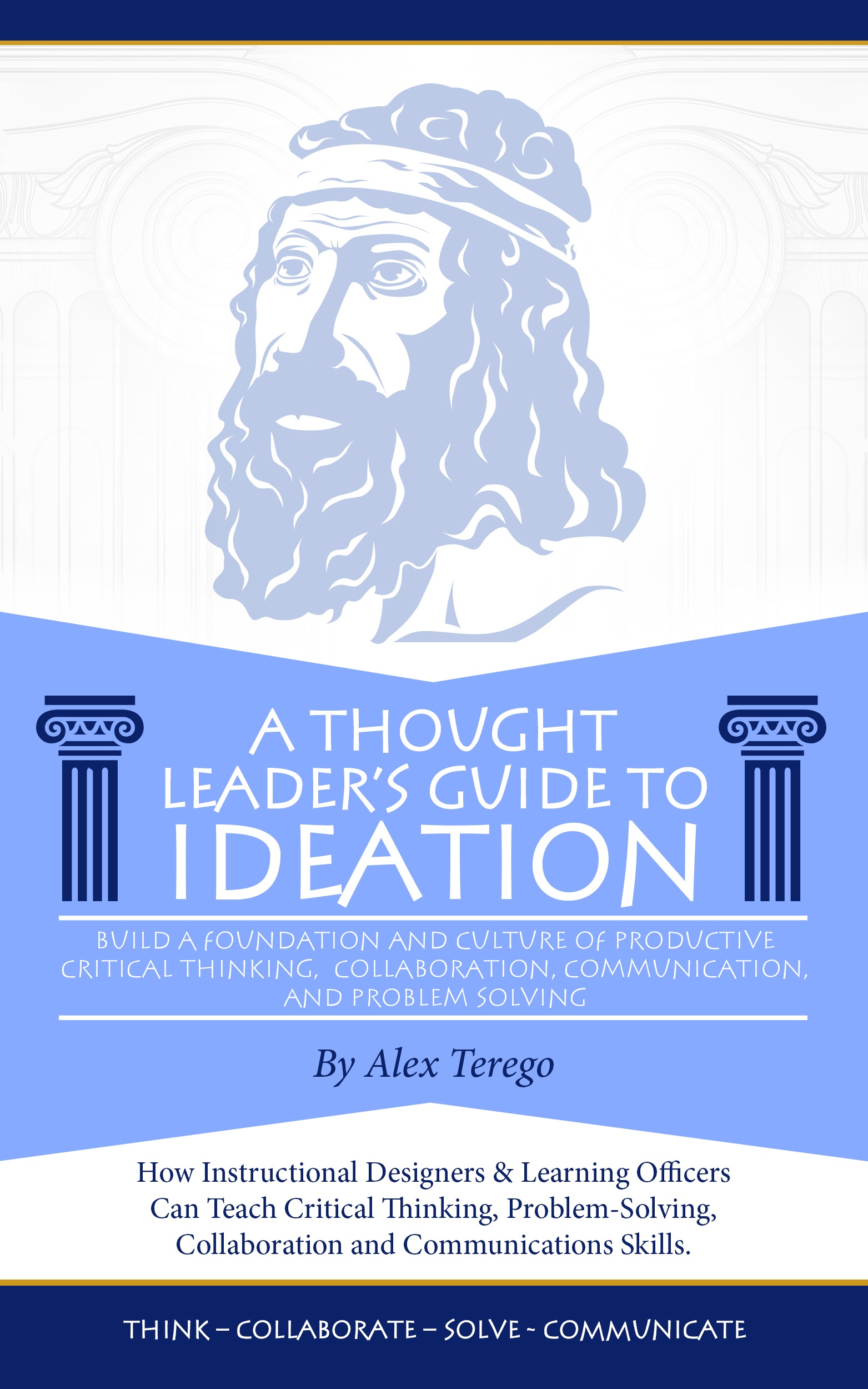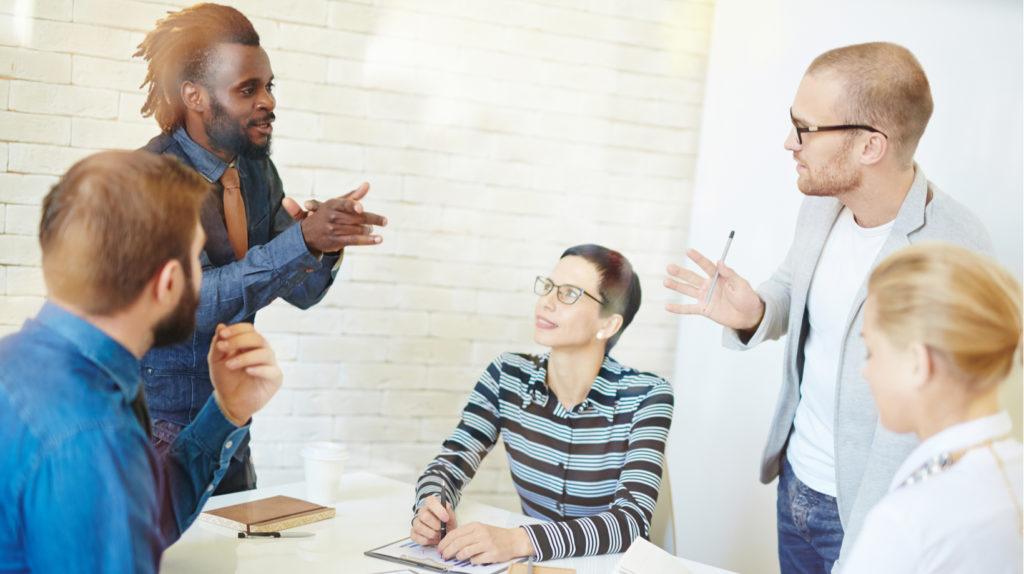Ideation In Instructional Design
Alex Terego, founder of Terego Enterprise Training, is allowing our readers to read portions of his work. This article comes from his book Instructional Designers and Learning Officers: A Thought Leader's Guide to Ideation.
You are patrolling the crossroads where old ideas about process and function and new ideas about process and function are meshing and often clashing. And, in this Fourth Industrial Revolution, getting this new way of doing things right is crucial.

And ideation is the key.
Ideation is the creative process of generating, developing, implementing, and communicating new ideas. These new ideas are in fact the solutions to problems that your company needs to know and doesn’t. Ideation quite literally takes the guesswork out of problem-solving. Don’t wait.
Recently I watched a speech given by a vice president of Google called Schindlhozler. It encapsulated the dilemma we all face.
“We need to be realistic,” he said, “In this new era, no one is going to hire you or promote you because of what you know. Google already knows everything, or soon will.”
The obvious inference from this statement is that companies are realizing they need to hire and promote only those people who know how to find out things the company needs to know – and doesn’t.
Watch my seven-minute video and you will be able to understand and explain this survival strategy. Buy my book A Thought Leader’s Guide to Innovation and you will be able to implement it.
We have all heard the expression “Innovate and Adapt, or Die.” It’s Darwinian evolutionary theory in five words. And it applies to businesses and other human enterprises, from the military to not-for-profits of all kind, just as much as it applies to those finches and turtles Darwin studied. It’s also a good poster to have on your wall.
At the risk of stating the obvious: Since we are living in the most disruptive times ever in human history, fostering a culture of continuous innovation must be a priority.
The question we must ask and answer is this one, “How?”
The answer? It all begins with individual and collective thought.
Critical Thinking – Design Thinking – Inventive Thinking – Innovative Thinking – Entrepreneurial Thinking – Creative Thinking – Problem Solving – Thought Experiments.
You have probably heard these terms often. My contention is that they are all basically the same thing. An endeavor—preferably a collective one—to uncover those precious, hidden ideas that make a difference.
The good—even great—news here is that human beings can think critically, innovatively, and creatively within a few years of being born. And without help. It’s innate. Ask a two-year-old to imagine something that doesn’t even exist and amazingly they can – a pink elephant for example. By the time they are adults, this skill has been squashed by our schools. I maintain that reviving this skill is the mandate of all Instructional Designers and learning officers and anyone involved in training. And this article is all about how to do just that.
And it’s simple!
Our ability to ideate is what makes us different: Homo Sapiens. The word ‘Sapiens’ can loosely be translated as ‘Thinking.’ If we were not able to think I would not be here writing this, and you would not be reading it either.
We just need to recover the ability to think, and to leverage it. And Ideation is the way forward.
So to begin, what is an IDEA?
An idea is a mental representation that can be either visual, concrete, or abstract. An idea is understood to be the basic element of thought. It is this capacity to create and understand the meaning of ideas that is an essential and defining feature of human beings.
An idea can be generated spontaneously without reflection or thought. Or it can be the result of a deliberate attempt to come up with a new idea to solve a problem. Both matter, but I am going to concentrate on deliberative ideation – Deliberately Thinking.
Ideation is a thought cycle and includes innovation, development, and actualization. It is basically a design process and encompasses almost any problem imaginable.
Ideation can be an individual effort, but a team following a process in a disciplined way is best suited to ideation. A team by definition is diverse (socially and skills wise) and if that diversity is leveraged there is a better chance of success. Ask CEO Ginny Rometty what are IBM’s greatest asset, and she will answer; “Teams.”
Critical Thinking is Ideation. And critical thinking can only be accomplished through questioning. How can you and your colleagues critically think in a team? By following this formula you and your team will be able to first Zoom-out on an issue to discover its context, before Zooming-in to uncover its secrets.
- Ask a question.
- Answer the question.
- Now – Question that answer.
- Now – Question that answer, and Repeat and Repeat and Repeat until satisfied.
- Communicate the result.
Steps 3 and 4 are accomplished by asking as many questions as the team can ask. And this means asking questions beginning with these words: Who. What. Why. Where. When. How.
Now let me illustrate the method for you using an example you can all identify with. Customer Service. Without customers, your business is simply a legal entity registered to do business. So, keeping an eye on how you service those life-sustaining customers is a very good idea.
Form a team and begin by asking all members to write down whatever comes to mind about the issue of Customer Service. Now watch this video with them of how that same problem can be analyzed in an Ideation setting using the power of critical thinking, collaboration, problem-solving, and communications.
And then discuss the “Before and After” with your team. Then turn them into life-long Ideators by reading my book.
Become a Thought Leader in Ideation.
“It gets results.” – Alan Solinger Ph.D. Medical Research.
“A must for anyone engaged in human capital development.” – Ann Miller PMP.







